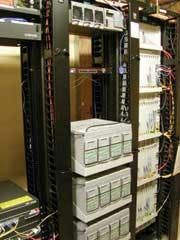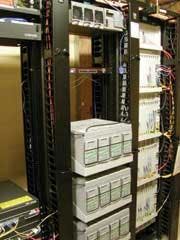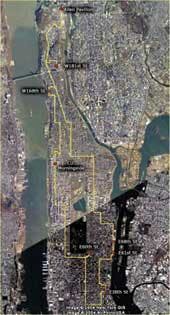New York-Presbyterian Hospital (New York, NY; www.nyp.org) has deployed an aggressive optical-fiber network to support an array of high-bandwidth Ethernet and storage services.
The hospital installed ADVA Optical Networking’s (Tokyo, Japan; www.advaoptical.com) Fiber Service Platform 3000, which supports the multi-site hospital’s growing array of high-bandwidth services, such as radiology/cardiology imaging, biomedical, research and business applications.
The hospital approved the installation after experiencing years of growing bandwidth needs . For each of the last five years, the hospital has experienced a 20% rise in bandwidth budget.
ADVA’s solution uses Dense Wavelength Division Multiplexing (DWDM) technology to break that cycle, future-proofing the hospital network for foreseeable growing bandwidth demand, while also providing immediate annual operational savings.
“We wanted something simple, reliable and scalable, and they [ADVA] seemed to fit perfectly to that,” says Leo Bodden, director of network services for the hospital.
The hospital’s radiology department pushed for the new solution since its applications required more extensive amounts of bandwidth, which could be carried over to the old ATM infrastructure.
“We were designing an optical network and we had requirements for disaster recovery between our two data centers,” says Bodden.
ADVA’s FSP 3000 employs parallel use of DWDM and Time Division Multiplexing (TDM) technology to enable all protocols between 8-Mbits/sec and 10-Gbits/sec and up to 256 applications with a total capacity of 320-Gbits/sec to be transported over one fiber pair. The system’s design supports point-to-point, linear add/drop, ring, and meshed network topologies of up to 10 nodes across distances up to 500 km without regeneration.
Contractors reportedly faced only minor challenges of getting the optical-fiber infrastructure into place, and the work was completed slightly beyond the installation schedule. Today, the system is providing a capital and operational cost advantage. Before installing the optical network, the hospital paid $693,000 per year to carriers for a network that provided little more than 50 Mbits/sec per channel. After installing the optical network, however, the annual cost went down to $542,000.
“So, this year, we would pay almost twice as much for our WAN had we not done this,” Bodden explains. “Before the end of the year, we will save over $50,000 by migrating the services.”
Today, the hospital’s applications include Picture Archiving and Communication System (PACS), in which radiology and cardiology images are digitally stored, manipulated and shared across sites. Live telemetry data over network for physiological monitoring is also available. The network also provides system/application high availability, including Fibre Channel disc mirroring, in which data is synchronously written to each of the hospital’s data centers to ensure business continuity in the event of failure at one or more sites. In addition, Voice over Internet Protocol (VoIP) connects the enterprise to multiple New York City carrier Points of Presence (PoPs).


